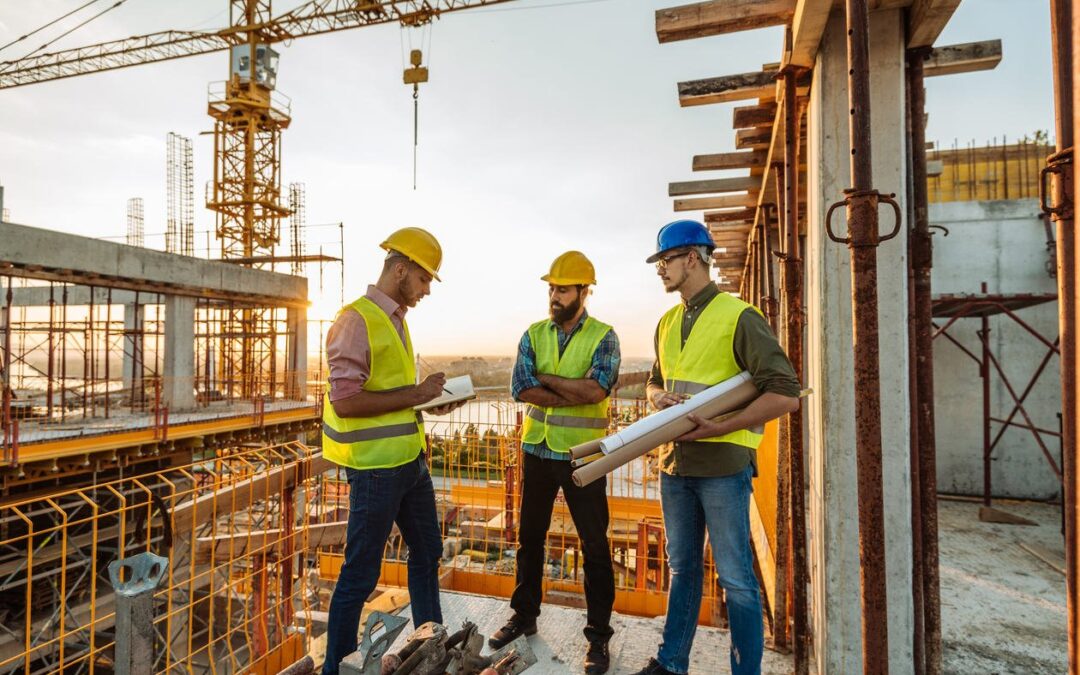4 Construction Site Security Methods that Save You Money
What is the security risk exposure on your construction sites?
How many instances of loss or theft do you incur every year?
How much do those instances cost you?
What do you do to ensure construction site security?
If you’re a project owner, General Contractor (GC), or Construction Manager (CM), then these are critical questions to ask. With every instance of theft or vandalization, there are not only the up-front costs to consider, but also the lost time or lost productivity that can result.
BUT, security systems and deterrence measures can be costly. This article explores the top-4 construction site security methods available to contractors and breaks down the potential ROI (return on investment) of each on a per-project basis.
Table of Contents-
Why Construction Site Security is Crucial
Top 4 Construction Site Security Methods
1. Video Surveillance
2. On-Site Security Personnel
3. Equipment Management Systems
4. Access Control
Why Construction Site Security is Crucial
Wondering what the stakes are with respect to construction site security? Let’s set the stage:
- It is estimated that losses stemming from theft on construction sites total approximately $1 billion per annum, in the United States alone.
- The average cost per instance of theft is $30,000, with only one in four items being recovered.
- There were more than 11,000 incidents reported in 2019, amounting to greater than 32 per day.
These losses are dealt at the hands of both thieves that might be employed on construction sites as well as pedestrian traffic that may garner unwanted access to sites after hours. Construction sites are often targeted due to the expensive nature of much of the equipment being used on-site, as seen above. Many construction sites also make low-risk, high reward opportunities, being that many modern construction sites remain unsecured. To make the situation worse, the cost to GCs and CMs is not just replacing the stolen equipment. It is also the lost productivity and time resulting from missing equipment, time spent on police reports and insurance claims, as well as the cost of renting or financing equipment to fill temporary needs and mitigate the risk of project delays.
Having a robust construction site security team to protect your sites can help you mitigate losses while also creating positive ROI on the project.
Top 4 Construction Site Security Methods
Completely securing a construction site from any threat of loss or damage might be an unrealistic goal. However, there are several steps that can be taken to keep workers accountable and dramatically reduce the risk of unwanted access to a project site. The following construction site security methods are not designed to be used in isolation, but rather, coupled or combined to build a comprehensive security team and strategy. Discover when it makes sense to consider each solution as well as the potential ROI on the investment.
1. Video Surveillance
Video surveillance solutions have come a long way. Gone are the days of pixelated 480p cameras with 12-hour memory stores. Today, most modern construction site surveillance solutions are bolstered with high-definition coverage, 360-degree coverage, alarm systems, infrared lenses or motion lights, automated alert systems to detect suspicious behavior, and more.These modern security systems, if properly deployed, can offer complete site coverage. And in doing so, these systems enhance the chances of catching culprits after the fact and recouping lost assets.The best part? They don’t put anyone’s personal safety at risk.
2. On-Site Security Personnel
Security guards are a staple within the construction sector. Though they are seldom used as a sole security mechanism, they make a powerful addition to many construction site security programs and can often serve additional purposes beyond site monitoring and patrol. Some of the primary risks that security guards protect construction sites from include theft of materials, damage to the project or property, stealing of designs or ideas, protecting labor, and keeping things organized.
Best applications for on-site security personnel:
- Smaller project sites with fewer possible points of entry, and less perimeter to patrol.
- High-crime areas and locations that might require a greater amount of deterrence, being that physical bodies are often seen as more intimidating than silent (or possibly unseen) deterrence mechanisms.
- Projects in busy urban settings. If there are hundreds (or thousands) of people within close proximity of your jobsite daily, then a physical deterrence mechanism can be instrumental in preventing unwanted site access.
3. Equipment Management Systems
Studies have determined that 79% of employees will steal from an employer, at least once. This brings new urgency to the notion that construction companies need to not only protect from outside, but also within. The first step in developing an equipment registry is tagging every item on your building site with a serial number, license plate, or other identifying feature. Some of these items must be registered in accordance with legal mandates (license plate on a forklift), however, others are optionally tracked by the project owner, GC, or CM with tags (equipment such as impact wrenches, electric nibblers, etc). Someone on-site should then be responsible for ensuring that all equipment is properly checked-out and check-in. Though equipment registries themselves do little to prevent theft from those external to your workforce. Having most of your equipment consolidated in one secure location makes it less readily available to potential thieves, thus, reducing losses.
4. Access Control
Construction access control systems are an underrated security mechanism available to project owners, GCs, and CMs. They bring software and hardware together by connecting turnstiles, door strikes, or other entry points to LTE-connected smart devices that verify worker credentials and prevent unqualified/uncertified workers from entering a jobsite.
This security approach is two-prong:
- It safeguards the project from potentially dangerous workers (unapproved, uncertified, or those with ill intent) entering the site and eliminates the risk of receiving any non-compliance related fines.
- It secures the perimeter of the jobsite entirely, making it much more difficult for unwanted individuals to gain access to the site afterhours.





